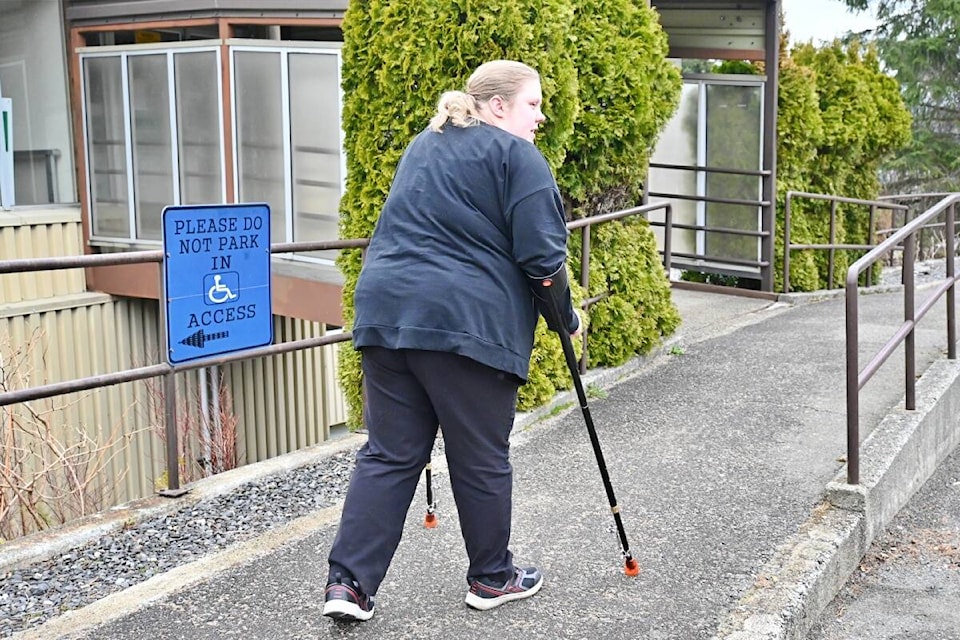The essentiality for an Accessibility Committee to develop a plan on access and need accommodation in the municipality has been recognized by the City of Prince Rupert, with a call out for member participants.
At the March 20 regular City Council meeting, city staff were directed to advertise for seven people so a committee to address accessibility issues in the area could commence. At least half of its members must be persons with disabilities or individuals who support or represent organizations that support persons with disabilities, with at least one member an Indigenous person.
As of September 1, 2023, under provincial legislation, Bill 6 - Accessible BC Act, municipalities must have an Accessibility Committee established, develop an accessibility plan and establish a procedure for receiving public feedback.
Veronika Stewart, communications manager for the City of Prince Rupert, told The Northern View the city wants to ensure it is meeting the province’s needs to have the mandatory committees.
“This is something that the city knows is a long time coming. We really need to work on gaining insight from folks in our community about how we can be more accessible and make sure that our services accommodate all residents.”
“Our strategic plan has identified the need to work on policy that focuses on justice, equity, diversity and inclusion. This is definitely in support of that strategic goal of council.”
In a report to the council presented at the meeting, Stewart stated according to legislation, an accessibility plan should outline how the organization will identify, remove and prevent barriers to people in the organization or interacting with it.
“The focus of individual accessibility plans of organizations will be dependent on the mandate of the specific organization. For instance, the city’s plan will be tailored to increasing accessibility across the programs, services and amenities provided by the municipality,” the report reads.
Stewart said city staff had received feedback and concerns from citizens about numerous accessibility issues in various places, such as parking, lift access and ramps. Staff have responded to those concerns and have acted on them.
“We’ve installed an accessibility lift … at the recreation complex to help folks access the top floor so that they can access programs. We also changed and reoriented city hall so that you come in through the side door … with a ramp so that everybody can access the building,” Stewart said, adding that they are also collecting information from people on accessibility regarding the Parks and Recreation Plan for future development.
Stewart agreed that equal and inclusive accessibility doesn’t just stop at the ability to enter a building. When asked about things such as visual aids, increased website access or talking crosswalks, she said those are items that are considered as infrastructure is replaced.
“Sometimes, cost impacts have been a challenge in the past in making improvements as quickly as we’d like to,” she said. “What we’d like to do with this committee is to collect the priorities from people living in the community with lived experience of hearing impairments and vision impairments and other disabilities, just so that we really know where the priorities are to target.”
“We are looking for a broad base of folks in the community to serve on the accessibility committee, so we’ve got a good range of people to provide that kind of feedback because we know that disability isn’t just being in a wheelchair,” she said.
When comparing other municipalities, like ones down south, she said they have a broader cash base that has enabled them to update accessibility more recently than Prince Rupert and that is part of the challenge the city faces.
She said with dated infrastructure, the same standards were not in place at the time of construction.
“… If it hasn’t been replaced in the near term, then sometimes those accessibility considerations weren’t taken into account. So we know that’s now something that we need to change. It’s definitely a standard that we’re applying as we renew infrastructure, which is something that we’re super focused on currently.”
Once the committee members are chosen in April, it is anticipated the group will be operational by end of May then they will be able to assist in identifying potential blind spots that go further than construction.
In the past, concerns and needs of the community have been addressed in a more ad-hoc way, Stewart said. The committee will help streamline the information collection to make it a more direct link with residents while creating an accessibility plan. It would be up to the Accessibility Committee to make suggestions on improvements and if accessibility bylaws should be implemented.
For those wishing to express interest in being on the committee, they have until April 7 at 4:30 p.m. to contact rosamaria.miller@princerupert.ca or phone 250 627 0963.
